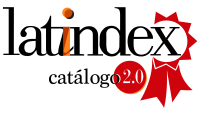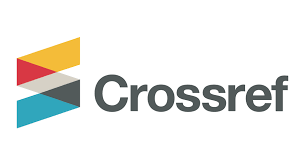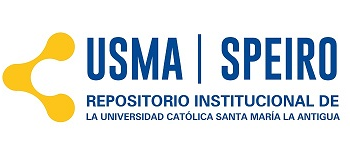Ethics Policy and Good Practices
Publication Ethics Statement
The Revista de Investigación y Pensamiento Crítico (IPC) is an open indexed journal (OA) evaluated by peers (double blind) with a quarterly publication (January-May and September) of the Universidad Santa María La Antigua (USMA), specialized in the areas of the social sciences and engineering. The following statement of ethics for publication and good practices in IPC is presented below, based on the "Code of conduct and good practices" defined by the Publication Ethics Committee (COPE) for editors of scientific journals[1] and the “Code of Ethics and Statement of Good Practices” defined by the Barcelona Center For International Affairs (CIDOB)[2]. At the same time, demanding absolute clarity in scientific writing, ensuring the quality of what is published and respecting the intellectual property of the content of the articles. All parties involved in the publication of IPC must accept and respect the ethical principles expressed in this ethics policy.
1. Publications and compliance with good practices
1.1 References and plagiarism
The author(s) is(are) responsible for the accuracy of the content and citation of all references to ensure that the article and associated materials are original or do not infringe copyright; therefore, plagiarism is absolutely prohibited, so articles that are identified as plagiarism will be removed from the journal regardless of whether they were published or during the editorial process and penalized with an embargo period (you will not be able to republish in the journal within one to two years).
1.2 Evaluation of articles
Each article will be evaluated using the "double-blind peer review" method, to guarantee an evaluation process free of bias or conflicts of interest. The evaluation criteria are as follows: Originality, Rigor, Relevance to the field, Interest to a general audience, Quality of the writing, and Overall quality of the study. Each criterion will be scored as: I disagree, Neither agree nor disagree, Agree, Strongly agree. Depending on this rating, the evaluator will choose one of the following alternatives: 1) recommended with minor modifications, 2) recommended with major modifications, or 3) not recommended. In addition, the evaluator issues his observations and recommendations, which are addressed to the author and also to the editorial committee. To support the evaluation of the manuscript, the article is assigned a score (0, 1 and 2), where 0 represents the evaluator's consideration that the article is not recommended, 1 if the article is recommended with major modifications, and 2 if it is recommended. recommended with minor modifications. In this way, the score given by each evaluator is added and divided by the number of evaluators assigned to the article issued for review, thus the result is an average that could vary between 0 and 2. This average determines if an article will have priority to be published. . Articles that were approved, but not published in the current issue, will go to “waiting” status until the next issue. The final opinions will be issued by the IPC Editorial Committee. This implies that the article cannot be replaced during the evaluation process or withdrawn if it is recommended for publication, otherwise an embargo period will apply (you will not be able to submit articles in the journal within 4 months "one quarter").
1.3 Selection of articles
The members of the IPC Editorial Committee will select the articles from the list of eligible articles according to the eligibility criteria. In addition, the selection sessions will be chaired by the president of the Editorial Committee and to be legal, the quorum will be made up of half plus one of its members.
1.4 Confidentiality
The members of the Editorial Committee and the reviewers undertake not to reveal any information about any article submitted to the journal, outside of the participants themselves during the process and selection of the articles.
1.5 Duplication or concurrence of articles
The fact of submitting the manuscript to this journal implies that the author agrees with the evaluation method applied to the article, has not submitted the article for evaluation or published it in another journal, and the article is not in the process of being published in another. magazine. For this reason, the author(s) agrees not to send the article to another journal while awaiting the evaluation report from the Editorial Committee; therefore, such behavior is unacceptable, so if this situation arises it will be eliminated and penalized with an embargo period (it will not be able to publish again in the journal within one to two years).
2. Proofreading and style review
2.1 Responsibility of the Research Department
The Research Department will review and correct the style of the manuscripts
. For this process, you will have one week, extended to two, if necessary.
2.2 Review process
The Investigation Department will be in charge of carrying out a corrective review at three levels:
2.2.1 Typographical correction: typographical errors, misplaced spaces, orphan lines, etc.
2.2.2 Grammatical correction: spelling.
2.2.3 Correction of style: order sentences that escape the author (rephrase), give shape and meaning to words, point out ambiguities and redundancies.
2.3 Journal editor input
The editor will receive the revised and corrected manuscripts in a digital file (with the corrections implemented). Subsequently, the editor will send the articles to the authors for their correction approval. If the author approves the modifications, the editor will be in charge of sending the article to the editorial team to proceed with the layout process; however, if the author disapproves of any of the minor modifications made by the USMA Research Department, the editor will be in charge of adapting the content of the article, as long as it is kept in context and the corrections of the review process are respected.
2.4 Layout
The Research Department will begin the process of testing and correction of the magazine in digital version.
3. Obligations of the Editorial Committee
3.1 Item Selection Agreements
When selecting articles, the members of the Editorial Committee must be guided by the policies of the magazine's publication, in the case of plagiarism or fraudulent information in order to contribute to the care and improvement of the image and prestige of the magazine.
The members of the Editorial Committee are responsible for evaluating the articles based on the following criteria:
• Originality of the work
• Accuracy of the article
• Importance for the field
• Interest to a general audience, Quality of the writing, General quality of the study.
In no case will the race, gender, sexual orientation, belief, origin, citizenship, academy, business affiliation or political orientation of the author(s) be taken into account.
3.2 Article reviews
The members of the Editorial Committee will follow up on the comments by the evaluators to avoid excessively rigorous or offensive evaluations for the authors.
They may also propose to the author(s) modifications to the articles, based on the comments of the evaluators or by the instructions. It should be noted that the members of the Editorial Committee could reject an article without submitting it to peer review if it does not comply with the guidelines dictated by the instructions (style, thematic coverage or lack of scientific nature) or is incomplete.
3.3 Conflict of interest
The members of the Editorial Committee will refrain from participating in the evaluations, from publishing and from any editorial process that includes articles with which they may have a conflict of interest due to their academic relationship or affiliation with any of the authors. Confidentiality is maintained before possible clarifications, claims or complaints that the author(s) wish to refer to the Editorial Committee of the journal.
4. Obligations of the evaluators
4.1 Inputs to Item Selection Agreements
Reviewers will provide significant input in decision making for selection and may also assist the author(s) in improving the article.
4.2 Availability
Evaluators who do not feel capable of reviewing the article or who cannot carry out the review within the established time must inform the Editorial Committee with a prudent time to assign the article to alternative reviewers.
4.3 Review process
The evaluators who accept the assignment of the article within the established time must send the evaluation form with the guidelines defined by the Editorial Committee.
The evaluators who successfully complete the review will be granted a certificate of participation by the Editorial Committee.
4.4 Conflicts of interest
Evaluators are not allowed to disclose any direct or indirect information about the article under consideration and it is strictly prohibited to use articles under review or rejected.
5. Obligations of the authors
5.1 Guidelines
The author(s) can easily modify the structure of the IPC instructions for their article, but it must follow the provisions established by the Editorial Committee of the journal. Also, it is important to present the design and type of research, research steps, materials and methods. In addition, the author(s) must include the criteria for the selection of the treated material, controls, planned and carried out studies. It should be ruled out that the results are in logical order according to the proposed methodology. Use tables and figures when possible for a better explanation, clear, summarized and referenced.
5.2 Commitment to the journal
He(the) author(s) accept(s) the process of the peer review method: double blind, at the request of the Editorial Committee. In addition, the author(s) can only modify or withdraw the article before the date established for the cut-off of reception.
The author(s) is(are) responsible for the accuracy of the content and citation of all references to ensure that the article and associated materials are original and scientifically based.
5.3 Originality
The author(s) undertakes to write a paper with original results of a properly scientific investigation with the aim of enlightening readers on fundamental concepts.
The author(s) must accept and respect the standard of references adopted by the Editorial Committee.
5.4 Corrections or errors in the article
The author(s) must inform the Editorial Committee in the event of an error or inaccuracy in the context of the article published in the journal. If necessary, the author(s) must collaborate with the Editorial Committee to carry out the correction in the publication or an apology, as the case may be.
5.5 Conflicts of interest
The author(s) must publish in the article any acknowledgment to sponsors, either for financial support or profits to carry out the investigation. Direct or indirect "attack" on other authors, institutions or governmental and non-governmental organizations is unacceptable.
5.6 Access and reuse policy
Scientific articles published in IPC are the exclusive property of their authors. All the opinions and contents expressed in the magazine belong to their authors, following the guidelines of this document, the USMA declines all responsibility for the rights that could be derived from the reading, interpretation and use of the content of the published works. The authors must abide by the principle of free access in scientific journals. Therefore, all content must be freely available to the public, with the aim of promoting an exchange of international scientific-academic knowledge through our Open Journal System (OJS) platform, Speiro repository and indexing catalogues.
[1] http://publicationethics.org/about/guide/journal-editors, COPE.
[2]https://www.cidob.org/es/articulos/revista_cidob_d_afers_internacionals/normas/codigo_etico_y_declaracion_de_buenas_practicas.










